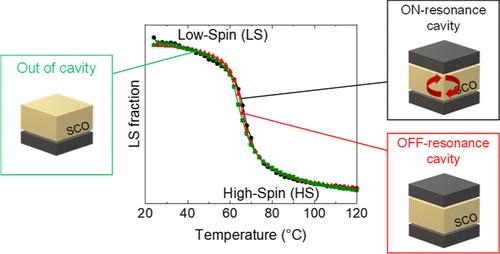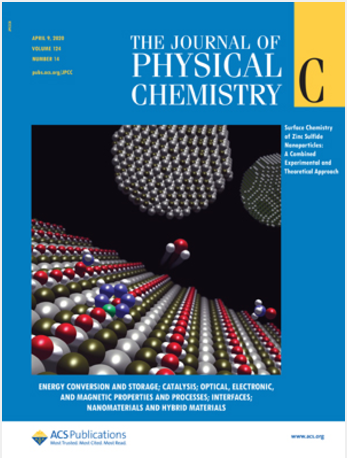Does Electronic Strong Light-Matter Coupling Affect the Ground-State Energy Landscape? An Experimental Study Using Spin-Crossover Molecules
IF 3.3
3区 化学
Q2 CHEMISTRY, PHYSICAL
引用次数: 0
Abstract
The effect of strong light-matter coupling on the electronic ground-state energy landscape of a large ensemble of coupled molecules remains an open question, even at the theoretical level, which still suffers from the lack of experimental studies. In the present work, we have conducted a very careful study of the thermodynamic phase equilibrium between the low-spin (LS) and high-spin (HS) states of a molecular spin-crossover (SCO) thin film, strongly coupled to the vacuum field inside a Fabry–Pérot cavity. While the cavity was tuned to be resonant with the intense charge-transfer bands of the SCO complexes in the LS state, allowing a strong-coupling regime to be achieved with a Rabi splitting of up to 670 meV, molecules in the nonabsorbing HS state remain uncoupled to the cavity. Importantly, no significant change in the spin-transition temperature is observed between the LS and HS states under light-matter coupling within the precision limit (1 °C) of our measurements. The present results demonstrate that, although collective strong coupling to electronic excitations can significantly perturb the excited states of molecules, the effect on the ground-state energy levels remains largely negligible (<0.6 meV).

求助全文
约1分钟内获得全文
求助全文
来源期刊

The Journal of Physical Chemistry C
化学-材料科学:综合
CiteScore
6.50
自引率
8.10%
发文量
2047
审稿时长
1.8 months
期刊介绍:
The Journal of Physical Chemistry A/B/C is devoted to reporting new and original experimental and theoretical basic research of interest to physical chemists, biophysical chemists, and chemical physicists.
 求助内容:
求助内容: 应助结果提醒方式:
应助结果提醒方式:


